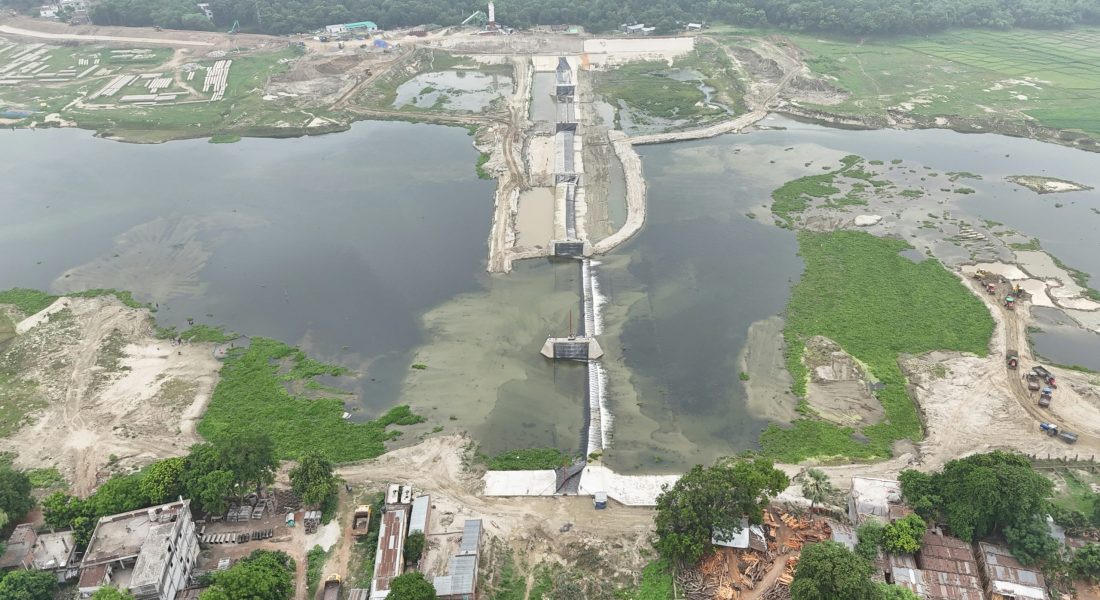Tailings dams don’t usually make the news – until something goes wrong. That’s why keeping tabs on them is so important. The good news? Monitoring technology has come a long way. These days, engineers and operators have tools that can spot problems before they turn into disasters. From sensors buried in the ground to drones and AI analyzing aerial imagery, there’s a lot more than just eyeballing the dam anymore. Here’s a look at some of the top tools you’ll want on your radar in 2025.

1. FlyPix AI
We at FlyPix AI focus on turning complex geospatial data into actionable insights for tailings dam monitoring. Using advanced AI, we analyze satellite, aerial, and drone imagery to identify objects and changes across dam sites quickly and accurately. Our approach allows us to spot potential issues or shifts in the environment that could affect the stability of tailings dams, giving us a clear picture of the whole area without relying solely on on-site inspections. By combining AI detection with cloud-based analysis, we ensure that the data we collect can be processed and visualized immediately, helping us and our clients understand trends over time.
In practice, we integrate custom AI models trained for each site to detect features relevant to dam monitoring, from changes in water levels to structural anomalies. We manage the workflow from raw imagery to actionable reports, making it easier for our team to focus on interpreting results and planning interventions. This approach also allows us to scale monitoring across multiple sites simultaneously, giving us the ability to maintain oversight even in remote or difficult-to-access locations. Overall, our system is designed to give us real-time visibility and insights, supporting better-informed decisions around the maintenance and safety of tailings dams.
Key Highlights:
- Automated analysis of satellite, aerial, and drone imagery
- Customizable AI models for specific tailings dam features
- Historical image comparison for trend analysis
- Scalable monitoring across multiple sites
- Reduces the need for constant on-site inspections
Who it’s best for:
- Engineering teams managing multiple tailings dams
- Risk assessment and safety monitoring groups
- Environmental compliance and reporting teams
- Operations managers needing ongoing site oversight
Contact Information:
- Website: flypix.ai
- Email: info@flypix.ai
- LinkedIn: www.linkedin.com/company/flypix-ai
- Address: Robert-Bosch-Str. 7, 64293 Darmstadt, Germany
- Phone: +49 6151 2776497

2. Canary Systems MLWeb®
Canary Systems MLWeb® provides a comprehensive platform for aggregating, visualizing, and analyzing data from multiple tailings dam monitoring technologies. The system integrates both internal measurements, such as pore pressures, internal deformation, and settlement sensors, and external monitoring data, including GPS, InSAR, and robotic total stations. By centralizing this information, engineers can review trends and detect potential risks across a facility in near real time, supporting better-informed decisions without relying solely on manual inspections.
The platform’s flexible data ingestion capabilities allow it to work with instrumentation and dataloggers from most vendors. With configurable import options and a built-in GIS engine, it can georeference data and events efficiently. Combining this with programmable scheduling and automated alarming, MLWeb® enables teams to correlate measurements from different sources and monitor multiple sites consistently. It serves as a hub for both analyzing historical trends and observing current conditions, helping to manage the complex dynamics of tailings storage facilities.
Key Highlights:
- Integrates internal and external tailings dam monitoring data
- Supports multiple instrumentation types: inclinometers, accelerometers, piezometers, settlement sensors, pressure cells
- Includes GIS engine for georeferencing data and events
- Programmable data collection and automated alarming
- Correlates data from different sources for trend analysis
Who it’s best for:
- Engineering teams managing multiple tailings storage facilities
- Risk management and safety monitoring groups
- Data analysts working with multi-source monitoring systems
- Mine operators seeking centralized oversight of dam conditions
Contact Information:
- Website: canarysystems.com
- Facebook: www.facebook.com/canarysystems
- LinkedIn: www.linkedin.com/company/canary-systems-inc
- Instagram: www.instagram.com/canarysystems
- Address: 5 Gould Road PO Box 2155 New London, NH 03257 USA
- Phone: +1-603-526-9800

3. GDMS Tailings Management Software
GDMS Tailings Management Software provides a cloud-hosted platform to monitor tailings storage facilities in real time. It integrates multiple data sources into a single environment, allowing teams to track metrics such as TSF levels, water flow, and structural behavior. By centralizing this information, engineers can visualize changes, correlate data, and understand trends without relying on multiple separate telemetry systems. The system focuses on removing personal biases from data interpretation and supports proactive monitoring of potential risks across the facility.
The software also enables teams to analyze operational and environmental conditions using 3D visualizations and predictive modeling. By overlaying mine data with field measurements, engineers can assess tailings behavior under different scenarios and plan interventions accordingly. This approach helps ensure that ongoing operations are managed effectively, while providing insight into design, rehabilitation, and long-term lifecycle planning for tailings storage facilities.
Key Highlights:
- Real-time monitoring of TSF metrics and behavior
- Cloud-hosted platform integrating multiple data sources
- 3D visualization and predictive modeling of tailings behavior
- Centralized data repository for streamlined analysis
- Multi-user interface supporting collaborative decision-making
Who it’s best for:
- Mine operators overseeing multiple tailings storage facilities
- Engineering teams managing TSF risk and operational planning
- Environmental and water management specialists
- Teams needing centralized, real-time TSF monitoring
Contact Information:
- Website: gdms.com.au
- E-mail: info@gdms.com.au
- LinkedIn: www.linkedin.com/company/geoscience-data-management-systems-pty-ltd
- Address: Garden Office Park, B355 Scarborough Beach Road Osborne Park, Western Australia 6017
- Phone: 08 6444 7988
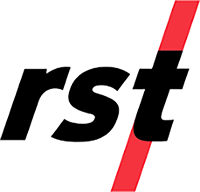
4. RST Instruments
RST Instruments provides a range of in-ground and above-ground technologies to monitor tailings dams, helping engineers track structural behavior and geotechnical changes over time. Their solutions include in-place inclinometers, ShapeArray systems, piezometers, and pressure cells, all of which deliver continuous measurements of deformation, pore pressure, and stress. By combining these in-ground tools with surface monitoring technologies like GPS and robotic total stations, teams can build a comprehensive understanding of tailings facility stability and anticipate potential issues before they escalate.
The company’s approach emphasizes the integration of multiple monitoring methods to create a holistic view of TSFs. Automated data collection systems allow measurements to be communicated in near real time, reducing reliance on manual inspections and improving the speed at which changes are detected. These tools are particularly useful in environments where ongoing tailings dam raises and operational pressures require continuous oversight and the ability to adapt monitoring strategies as conditions evolve.
Key Highlights:
- Continuous in-ground monitoring of deformation and stress
- Piezometers for real-time pore pressure data
- ShapeArray systems for multi-point deformation profiles
- Integration with surface monitoring for full TSF assessment
- Automated data collection with near real-time communication
Who it’s best for:
- Engineers responsible for tailings dam safety and stability
- Mining operators managing complex, multi-raise TSFs
- Geotechnical teams analyzing slope and soil behavior
- Organizations seeking integrated in-ground and surface monitoring
Contact Information:
- Website: rstinstruments.com
- E-mail: contact@beadedstream.com
- LinkedIn: www.linkedin.com/company/rst-instruments-ltd
- Address: 11545 Kingston Street Maple Ridge, BC Canada V2X 0Z5
- Phone: 1-800-665-5599
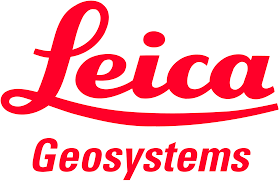
5. Leica Geosystems
Leica Geosystems offers a combination of geodetic and radar monitoring technologies that help track the stability of tailings dams in real time. Their systems include automated total stations, GNSS reference stations, radar sensors, and software for data analysis and visualization. These tools enable continuous monitoring of structural displacements, allowing teams to detect both gradual changes and sudden movements. By integrating multiple instruments, operators can observe the entire dam, from its embankments to surrounding land, producing a comprehensive view of tailings storage facilities.
The approach emphasizes the fusion of data from ground-based and aerial sources, with software that consolidates measurements from various sensors into centralized platforms. GeoMoS software, for example, processes total station data to generate trend analyses and alerts when predefined thresholds are exceeded. Radar systems complement these measurements by capturing surface velocities and potential rockfall activity. This integration ensures that monitoring programs consider both routine structural changes and unexpected events, providing a layered understanding of tailings dam behavior and supporting informed decision-making on site.
Key Highlights:
- Continuous geodetic monitoring with automated total stations
- GNSS reference stations for precise coordinate correction
- Radar sensors for surface movement and rockfall detection
- Software platforms for trend analysis, alerts, and visualization
- Integration of ground, aerial, and radar data for holistic monitoring
Who it’s best for:
- Mining operators managing multiple or large TSFs
- Engineers monitoring structural stability and displacement
- Geotechnical teams analyzing dam behavior over time
- Organizations needing real-time alerts and actionable monitoring data
Contact Information:
- Website: leica-geosystems.com
- Facebook: www.facebook.com/LeicaGeosystems
- Twitter: x.com/LeicaGeosystems
- Instagram: www.instagram.com/leicageosystemsag
- Address: Heinrich-Wild-Strasse 9435 Heerbrugg Switzerland
- Phone: +41 71 727 3131
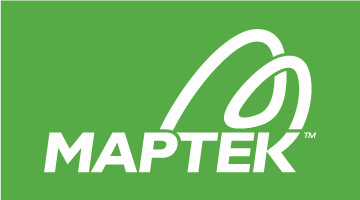
6. Maptek Sentry
Maptek Sentry is all about lasers and 3D models. It uses laser scanning to track the shape and movement of tailings dams and their surrounding areas. Over time, it can spot subtle shifts in the structure, helping teams plan maintenance or prevent bigger issues.
One of the nice things about Sentry is that it can keep working even in low light, so whether it’s day or night, you’re still getting data. The system produces detailed visuals and alerts, making it easier to see trends and share information with your team or regulators.
Key Highlights:
- Laser scan monitoring of highwalls and surroundings
- 3D modeling and deformation trend analysis
- Detection of seepage and moisture changes
- Continuous monitoring with automated notifications
- Detailed data for risk assessment and regulatory reporting
Who it’s best for:
- Engineers and operators managing tailings storage facilities
- Teams tracking structural stability over time
- Mine safety and risk management personnel
- Organizations needing continuous, remote monitoring of dams
Contact Information:
- Website: www.maptek.com
- E-mail: info@maptek.com
- Facebook: www.facebook.com/Maptek
- Twitter: x.com/maptek
- LinkedIn: www.linkedin.com/company/maptek
- Instagram: www.instagram.com/maptek.global
- Address: 14143 Denver West Parkway, Suite 200 Golden CO 80401
- Phone: +1-303-763-4919
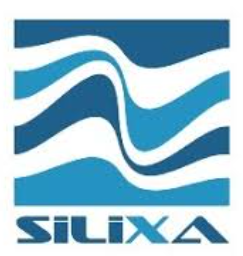
7. Silixa DamPulse
Silixa DamPulse is a fibre optic sensing system designed for continuous monitoring of tailings dams. It delivers real-time distributed measurements of temperature, strain, and acoustic signals, which allows teams to detect early warning signs of structural changes or potential failures. By integrating in-situ sensors with remote data access, operators can track dam conditions continuously without needing to be physically present on site, helping to identify seepage, slope deformation, or other stress-related issues as they develop.
The system also supports the detection of seismic events and potential dam breaches, providing a layered approach to risk monitoring. With data streaming in high resolution, decision makers can assess trends, correlate events, and implement mitigation strategies promptly. Its automated operation ensures consistent measurements over time, reducing the likelihood of gaps in monitoring and supporting long-term stability assessments for tailings storage facilities.
Key Highlights:
- Continuous distributed measurements of temperature, strain, and acoustic signals
- Remote access for real-time monitoring
- Seepage detection and slope deformation tracking
- Early warning of potential dam failures
- Supports seismic event and dam breach detection
Who it’s best for:
- Engineers managing large or complex tailings storage facilities
- Risk and safety teams monitoring structural integrity
- Mine operators needing continuous, automated monitoring
- Projects requiring integrated, multi-parameter data for early warning
Contact Information:
- Website: silixa.com
- LinkedIn: www.linkedin.com/company/silixa-ltd.
- Address: Silixa Ltd, Silixa House 230 Centennial Park Centennial Avenue Elstree, Hertfordshire WD6 3SN, UK
- Phone: +44 (0) 20 8327 4210
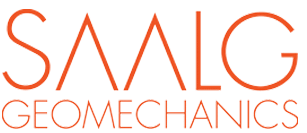
8. SAALG Geotechnical Monitoring Instruments
SAALG geotechnical monitoring instruments focus on measuring key parameters that indicate the stability and integrity of tailings dams. They include inclinometers for slope angle monitoring, piezometers for tracking pore water pressures, and settlement gauges for detecting vertical movements. These instruments provide continuous, real-time data that help engineers identify subtle changes in the dam structure before they escalate into serious problems. By monitoring shifts, pressures, and settlements, operators can make informed decisions about maintenance, reinforcement, or other risk mitigation measures.
Integration with geotechnical models further enhances the utility of these instruments. Data collected from sensors can be fed into numerical simulations to predict dam behavior under different conditions, from heavy rainfall to operational stress. This combination of real-time monitoring and predictive modeling allows for a more proactive approach to tailings dam safety. Emerging technologies, such as wireless sensors and drone-assisted surveys, are expanding these capabilities, enabling broader coverage and faster interpretation of complex datasets.
Key Highlights:
- Inclinometers for monitoring slope angle changes
- Piezometers for measuring pore water pressures
- Settlement gauges for vertical displacement detection
- Integration with geotechnical models for predictive insights
- Supports early detection of structural risks
Who it’s best for:
- Engineers responsible for dam stability assessments
- Risk management teams tracking structural integrity
- Mine operators managing large-scale tailings storage facilities
- Researchers and analysts using geotechnical models for simulation
Contact Information:
- Website: www.saalg.com
- E-mail: info@saalg.com
- LinkedIn: es.linkedin.com/company/saalg-geomechanics
- Address: Av. Diagonal 359, 2nd floor, 08037 Barcelona, Spain
- Phone: +34 625080870
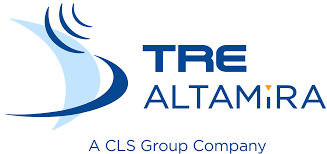
9. InSAR Monitoring
InSAR, or Interferometric Synthetic Aperture Radar, uses satellite-mounted radar to monitor ground displacement over wide areas with millimetre-level accuracy. Unlike traditional point-based monitoring, InSAR can track the entire surface of a tailings dam and its surroundings, revealing subtle shifts that might otherwise go unnoticed. This approach allows engineers and stakeholders to observe patterns of movement and deformation over time, providing a more complete understanding of the dam’s behavior and potential risks.
The technology is particularly useful when integrated with traditional ground-based monitoring, such as inclinometers or piezometers, to validate findings and enhance overall reliability. By reducing the need for frequent site visits and manual measurements, InSAR minimizes exposure to potentially hazardous conditions and helps maintain environmental and operational safety. Although it may not capture fine-scale changes at specific points, its broad coverage and frequent data acquisition make it a valuable tool for long-term monitoring and risk assessment of tailings dams.
Key Highlights:
- Wide-area monitoring of tailings dams and surrounding terrain
- Millimetre-level accuracy in detecting ground displacement
- Frequent satellite revisits allow continuous tracking of changes
- Can be combined with traditional monitoring for cross-validation
- Reduces the need for on-site personnel in hazardous areas
Who it’s best for:
- Mine operators managing large or remote tailings facilities
- Engineers and geotechnical teams tracking dam deformation trends
- Environmental and safety officers seeking to minimize on-site exposure
- Analysts integrating multiple monitoring datasets for predictive models
Contact Information:
- Website: site.tre-altamira.com
- E-mail: sales@tre-altamira.com
- Twitter: x.com/TRE_ALTAMIRA
- LinkedIn: www.linkedin.com/company/tre-altamira
- Address: Parc Technologique du Canal 11, Rue Hermes 31520 Ramonville-St-Agne
- Phone: +33 561 394719

10. Worldsensing Remote Monitoring
Worldsensing’s remote monitoring platform relies on IoT connectivity to track a wide range of parameters across tailings dams without requiring constant on-site presence. By wirelessly linking geotechnical instruments, environmental sensors, and process measurement devices, it allows operators to observe dam behavior over time and detect early signs of potential issues. The system combines long-range data transmission with low power operation, making it suitable for remote or hard-to-access sites where frequent manual checks are impractical.
The platform supports integration with instruments such as piezometers, tiltmeters, total stations, and GNSS receivers, alongside environmental tools like weather stations and water level sensors. This versatility enables a more complete understanding of dam conditions, from structural integrity to environmental influences. By consolidating this information in cloud-based software, teams can visualize trends, receive alerts, and make informed decisions without physically visiting the site, improving both safety and operational efficiency.
Key Highlights:
- IoT connectivity for wireless monitoring of geotechnical, environmental, and process parameters
- Supports a broad range of instruments, including piezometers, crackmeters, tiltmeters, and GNSS receivers
- Long-range data transmission suitable for remote tailings dams
- Cloud-based management software for real-time visualization and alerts
- Reduces the need for frequent manual site inspections
Who it’s best for:
- Mining operators managing multiple or remote tailings facilities
- Geotechnical and environmental monitoring teams
- Safety officers seeking early warning and real-time alerts
- Engineers integrating multi-sensor data for structural and environmental analysis
Contact Information:
- Website: www.worldsensing.com
- Twitter: x.com/worldsensing
- LinkedIn: www.linkedin.com/company/worldsensing

11. RAMJACK Tailings Dam Monitoring System
RAMJACK makes keeping an eye on tailings dams a lot easier. Their system connects all sorts of sensors – piezometers, inclinometers, extensometers, pressure cells, and even geo-resistivity monitors – so you can see what’s happening underground in real time. Basically, it’s like giving your dam a set of very smart “eyes and ears.” All these sensors talk to a central hub wirelessly, which means you don’t have to be on site constantly to know what’s going on. The system tracks trends, spots sudden changes, and flags anything unusual, helping engineers figure out if the dam is behaving normally – or if it’s time to take action.
What’s cool is that RAMJACK works in remote locations too. The devices are battery-powered, use long-range communication, and you can store the data on either physical servers or in the cloud. This means teams can monitor an entire facility from anywhere, catch early warning signs, and make decisions quickly – without trekking out to the site every day.
Key Highlights:
- Wireless integration of multiple geotechnical sensors
- Real-time data on thresholds, trends, and anomalies
- Time-lapse monitoring for soil resistivity and water content changes
- Long-range, low-power communication suitable for remote locations
- Supports physical or cloud-based server integration for centralized analysis
Who it’s best for:
- Mining engineers monitoring tailings dam stability
- Operations teams managing remote or large-scale tailings facilities
- Safety and risk management personnel requiring early detection of issues
- Analysts and planners needing continuous, centralized access to geotechnical data
Contact Information:
- Website: ramjacktech.com
- E-mail: emena@ramjacktech.com
- Facebook: www.facebook.com/ramjacktech
- LinkedIn: www.linkedin.com/company/ramjack-technology-solutions
- Phone: +34 665 716 513
Conclusion
Keeping an eye on tailings dams has never been just about ticking boxes or meeting regulations. The tools covered here show how the field has evolved into something more dynamic, combining data, sensors, and remote monitoring to give a clearer picture of what’s happening beneath the surface. Whether it’s wireless networks feeding real-time information, satellites tracking millimeter shifts, or platforms that bring all the data together in one place, the focus is on understanding the risks before they become emergencies.
What stands out is how these systems let engineers and operators see patterns and trends that would have been nearly impossible to spot a decade ago. They’re not replacing human judgment but giving it a sharper edge – helping teams respond faster, plan better, and, ultimately, keep people and the environment safer. In 2025, monitoring a tailings dam is less about reacting to problems and more about anticipating them, which is exactly the shift the industry needs.
